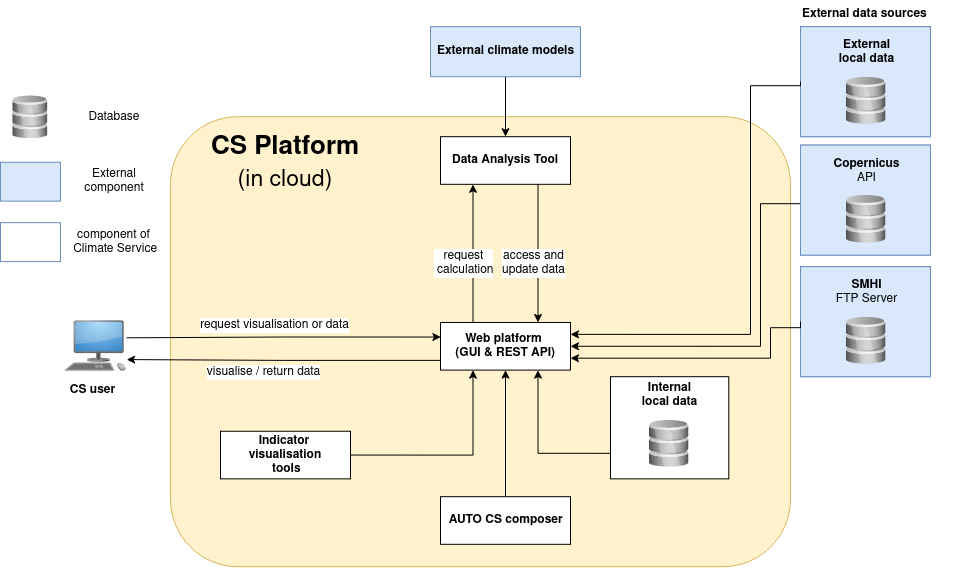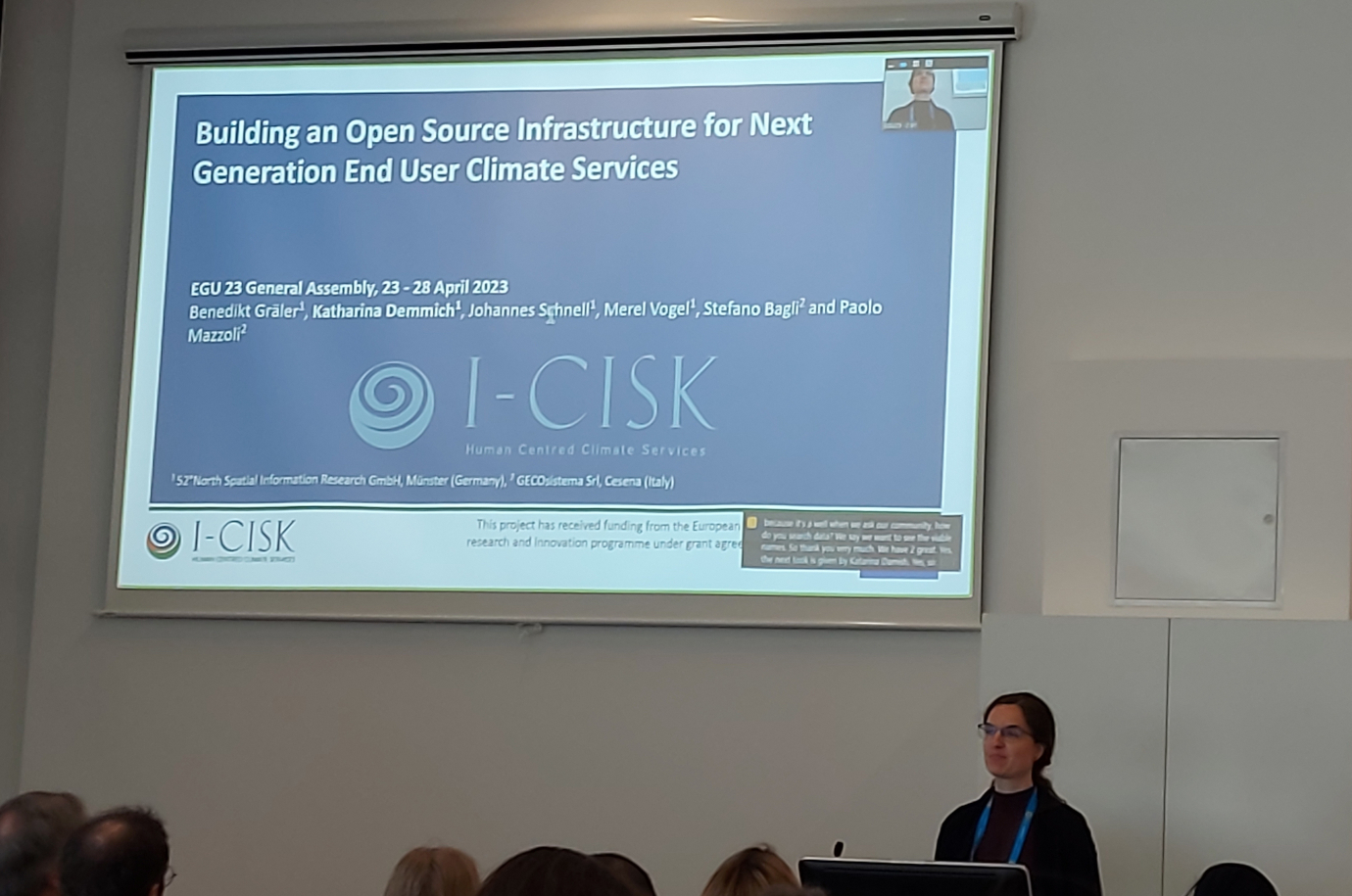Building an Open Source Infrastructure for Next Generation End User Climate Services
At the recent EGU conference, 52°North presented the current status of the cloud-based web platform implemented within the I-CISK project. The I-CISK project aims to bridge the gap between science and society in the development of adaptation strategies to climate change. Although various research studies are currently addressing this challenge, the knowledge gained rarely reaches society in a format that can be easily understood and applied to adapt to climate threats. Therefore, the I-CISK consortium follows a co-creation process in which stakeholders as well as software infrastructure developers and climate modelers work in close collaboration. Together with GECOsistema, 52°North is leading the implementation of an open source web platform that will provide climate indicators to stakeholders in a comprehensive way. The platform will connect modeling tools for weather forecasts and climate projections with local data sources as well as available climate services, e.g. from the Copernicus Earth observation program.
The stakeholders involved in the I-CISK project are organized in seven so-called Living Labs, which are areas (mostly in Europe, but also in Georgia and Lesotho) that serve as sandboxes for Climate Services development. The professions of the stakeholders are extremely diverse, ranging from people working in tourism or agriculture to policy makers. As one can imagine, this diversity leads to a wide range of requirements for the CS platform, which will shape the final platform architecture. To discuss user requirements, 52°North initiated bilateral meetings between Living Lab representatives and the platform developers to identify suitable climate indicators and outline the workflows required for their calculation. Based on this discussion, quality goals were identified and the main platform components were defined.

The platform will feature an interactive GUI as well as a REST-based API through which users can request the calculation of specific indicators. The climate modeling tools and data components will be implemented in a modular fashion, so that individual components can be combined and additional components can be added without changing the core architecture. Some of the modeling tools will run within the CS platform as part of the Data Analysis Tool, but models from external services will also be connected. The same concept will be followed for data integration, where some of the data will also be stored on internal storage, while other data sources will be accessed as external services. A special feature of the CS platform will be the AUTO CS composer, which will enable stakeholders to build their own dedicated CS by chaining individual data sources and model components using the GUI.
Gradually leaving the planning phase, 52°North is now starting to implement the platform architecture. At the same time, we are participating in the analysis of stakeholder requirements for the indicator visualizations.

Leave a Reply